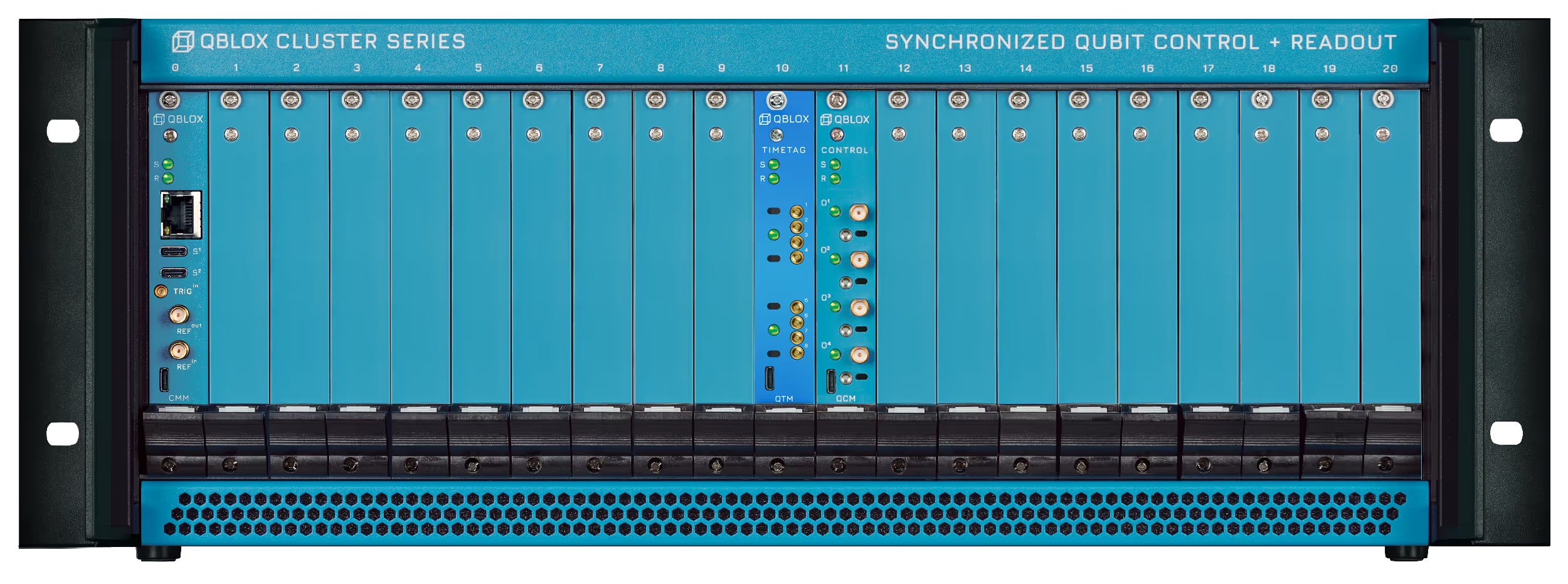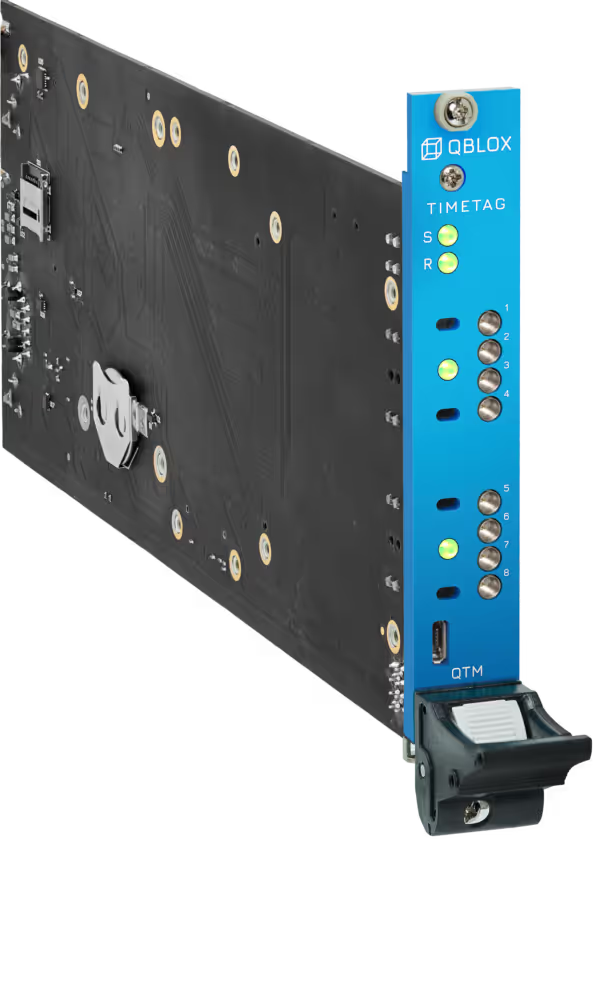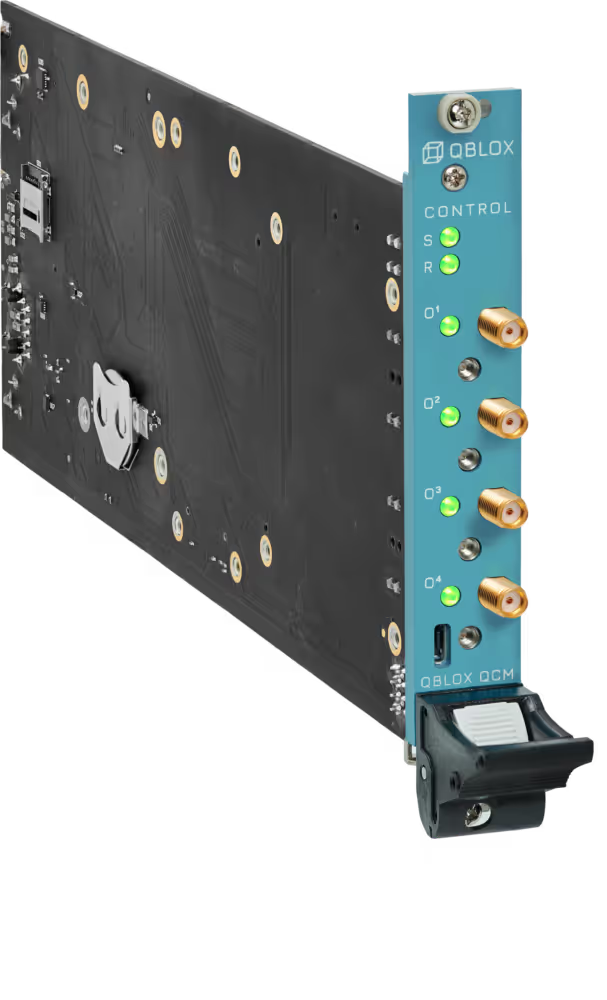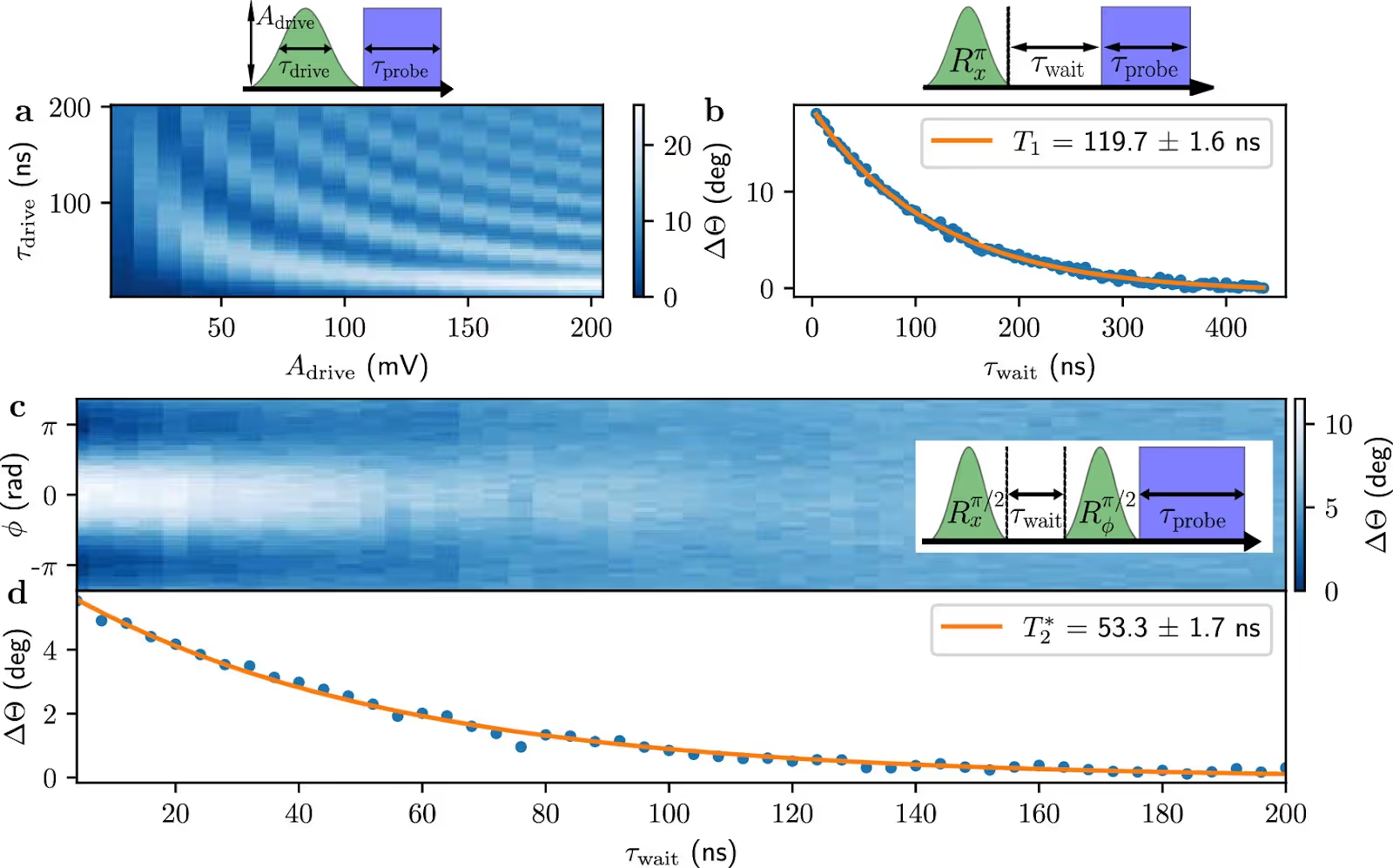Building a quantum network is a challenging but promising endeavor. Envision a future where quantum information travels, forming a network of quantum devices that’s fundamentally unhackable. This would include long-range communication to connect quantum computers at various distances, including both shorter distances for distributed quantum computing and much larger distances. Researchers are bringing that future closer, demonstrating quantum repeater nodes that can extend entanglement over 50 km [Howe et al., 2024], and exploring how to scale quantum networks efficiently [Krutyanskiy et al. 2023].
In this ambitious pursuit, optically addressable qubits stand out due to their adaptability in performing redundant tasks. But how do we begin on a small scale - getting two qubits to communicate across significant distances? How can, for example, two-color centers, achieve entanglement? The answer lies in the Bell state measurement.
This experiment demands precise control over quantum states, synchronized photon emissions, and rapid electronic decision-making to execute successfully. Could this exceptional level of precision be the key to accelerating the development of quantum networks?
Color centers as representative optically addressable qubits
Color centers are a fascinating type of optically addressable qubits. Though imperfections by definition, color centers are atomic-scale defects. These defects can include vacancies or impurities embedded within the crystalline structures of materials like diamond or silicon carbide. Their name comes from their light-emitting behavior: each defect emits photons at a specific frequency, or 'color.' By creating localized electronic states within the crystal, color centers can store and manipulate quantum information. Examples include nitrogen-vacancy (NV) centers in diamond, tin-vacancy (SnV) and germanium-vacancy (GeV) centers, as well as defects in silicon carbide. These systems are optically addressable, meaning their states can be manipulated and read using light, typically with precision lasers.
The key to leveraging color centers lies in understanding their interaction with light. By driving transitions with laser pulses, the color centers emit photons that carry information about their quantum state. The arrival time, detection timing, polarization, or even the presence or absence of a photon can all carry valuable quantum information. Scientists rely on a technique called time tagging, where the arrival time of each photon is recorded with extreme precision. This allows them to deduce the qubit's state and even possibly manipulate it.
Light-up color centers to quantum entanglement
A single color center can store and process quantum information, but information is only truly useful if it can be shared. As we aim to scale quantum systems, the challenge is not just manipulating individual qubits, but linking two or more qubits, regardless of the distance between them—entangling them. Why? Entanglement can be used to share quantum information or quantum operations between qubits while preserving the quantum states. Entanglement is thus essential for sharing quantum information. Furthermore, it is a highly secure method to transfer data. Entanglement enables secure and efficient communication over long distances, a central requirement for quantum networks.
The most common way to create and confirm entanglement between two qubits is through a Bell State Measurement (BSM). Bell states are a set of fundamental entangled states of 2 qubits. Typically, a BSM involves a clever interplay of photon detection and interference. Imagine two color centers, each prepared in a superposition state. When these centers emit photons, the photons are guided through optical fibers to a central measurement station. At this station, the photons pass through a beam splitter—a device that combines their paths in such a way that their quantum states interfere with each other and the observer loses track of where the photon came from. By carefully analyzing the interference through coincidence photon detections and possibly the arrival times of the photons at the detectors, we can determine the specific entangled state of the two qubits. If the detections show the right type of interference, we confirm that the qubits are entangled.
However, this is not a simple process; timing is crucial for accurate results. The exact timing of photon emissions and detections is essential for discerning the interference that indicates entanglement. Any timing errors can lead to incorrect conclusions about the quantum state of the system, potentially compromising the integrity of the entangled state.
Leveraging Bell state measurements with QTM
Performing a Bell state measurement is quite tricky. Imagine trying to catch two incredibly fast-moving objects and then, in a split second, making a decision about how they're related. That's essentially what BSM involves. It not only demands pinpoint accuracy in detecting photons but also lightning-fast communication with the entire electronic setup. Sending precise control pulses to manipulate those qubits in real time? It's quite a challenge.
That's where Qblox steps in, offering an integrated solution that brings this complex process within reach. Our setup acts like a well-oiled machine, featuring a cluster of interconnected modules designed for both generating and acquiring signals. The magic lies in the meticulously synchronized time reference across all modules, achieving precision within few picoseconds, and their time-to-digital conversion, ensuring everything happens with perfect timing. For a typical BSM experiment, a Qblox setup includes the Qubit Timetag Module (QTM). Additionally, the Qubit Control Module (QCM) is also included for the better preservation of the coherence of the entangled states on a longer time scale of several seconds, possible through a dynamical decoupling sequence.

Here's a breakdown of the experiment:
- Photons emitted by two color centers arrive at a midpoint from opposite directions, with each photon detected by a photodetector, the output of which is connected to a channel of the QTM.
- The QTM identifies coincidences, which are instances where photons are detected within a narrow time window, indicating potential entanglement.
- The QTM uses a built-in Truth Table to make decisions based on the detected signals. The Truth Table is configured in such a way that conditionally on the measured state an operation is triggered in the QCM.
The QTM has a user-configurable Truth Table to make quick decisions based on the state it detects. Think of it as a decision-making brain that processes information at ultra-fast speed. If the QTM detects a coincidence, it sends feedback to the QCM, which then manipulates the qubits accordingly. If no entanglement is observed? No problem. The system simply prompts the photon source to try again. This dynamic feedback loop saves a tremendous amount of time and effort, increases the reliability of entanglement generation, and ultimately boosts the efficiency of quantum networks.
.avif)
This coincidence detection feature of the QTM is a game-changer. Leveraging precise photon coincidence measurements and immediate responses is critical for observing the intricate photon interference patterns required to verify entanglement through Bell State Measurements (BSM). This capability enables researchers to fine-tune experiments, significantly improving the likelihood of creating and confirming entangled states over extended periods. Accurate timing of photon emissions and detections is essential for discerning the interference indicative of entanglement, as any timing errors can compromise the integrity of the entangled state.
The QTM as an advanced time-tagging module excels in how seamlessly it integrates into a control stack. By incorporating time-to-digital conversion and maintaining a synchronized time reference across all modules, the system guarantees unified and accurate timing. The key to this module's advanced performance is its ability to consolidate digital signal generation, counting, and time-tag acquisition into a single instrument. This reduces the need for multiple devices, simplifying experimental setups and minimizing complexity. The integration also enhances the scalability of quantum systems, decreases feedback latencies, and improves the overall user experience, allowing researchers to focus on their experiments rather than managing intricate configurations.
What does this mean for quantum networks?
This experiment isn’t just about proving entanglement - it's a crucial step toward building the quantum networks of the future. By integrating optical detection with electronic feedback, the Qblox setup for optically addressable qubits can:
- Verify entanglement: We can significantly reduce errors and wasted efforts in verifying entanglement, ensuring that our quantum links are robust and reliable.
- Scalable networks: It provides the foundation for building large-scale quantum networks, where multiple quantum devices can communicate efficiently and reliably.
- Enhance security: This technology strengthens the security of quantum communication, particularly in applications like quantum key distribution, paving the way for truly secure data transmission.
Time tagging plays a pivotal role in these advancements, acting as the bedrock of quantum network functionality. It enables applications like blind quantum computing, where a client can perform computations on a quantum processor without revealing sensitive information, and distributed quantum computing, which boosts processing power by connecting multiple quantum computers. These seemingly different applications rely on time tagging for precise synchronization and reliable data transfer, making it essential for establishing long-range, secure quantum connections.
As we continue to improve color center technology and achieve more precise qubit placement, tools like the Qubit Timetag Module (QTM) will become indispensable. The future of quantum networks hinges on our ability to develop technologies that can swiftly and accurately interact with delicate quantum states. With the right tools at our disposal, we can harness the power of entangled photons to construct resilient, high-performance networks that will redefine the boundaries of quantum communication.
Qblox OAQ Success Stories
A long distance experiment with the Qblox's Qubit Timetag Module
In collaboration with the KiQQer consortium (TNO, Qunnect, Xairos, Single Quantum), we have used the QTM to demonstrate a proof of principle for a photon coincidence experiment. We measure photon correlations from two detectors separated by an effective travel path of 220 m, which includes 150 m of free space travel. The QTM’s windowed acquisition was leveraged to eliminate dark counts, resulting in a clear correlation peak despite the presence of inherent imperfections such as weak signals and background noise. The QTM simplifies and streamlines such experiments ensuring precise and efficient photon detection.
Qblox wins the Innovation Award at QIA PI+ Meeting 2024
The Qubit Timetag Module (QTM) was developed by Qblox through a close collaboration with partners in the Quantum Internet Alliance (QIA), namely QuTech (Delft), ICFO (Barcelona), and the University of Innsbruck, and is designed for seamless integration with platforms including NV centers, REIDS quantum memories, and trapped ion qubits. This breakthrough was recognized with the QIA Innovation Award at the 2024 PI+ Meeting, highlighting significant progress toward building quantum internet testbeds. Read more about it here.



.avif)
.svg)












